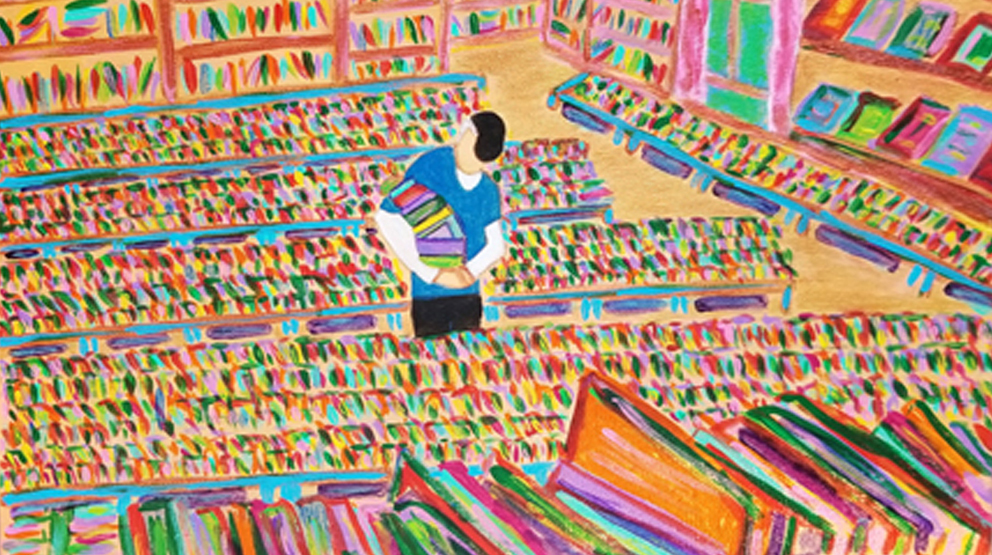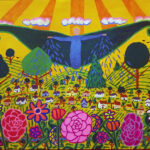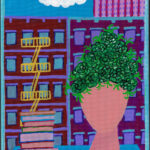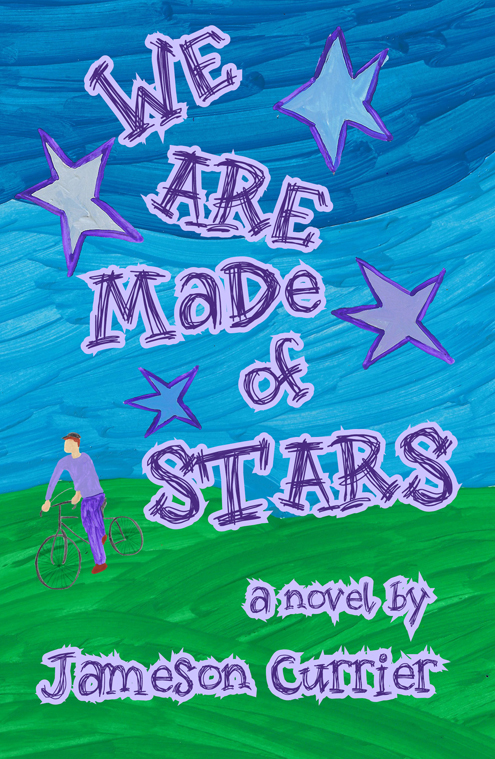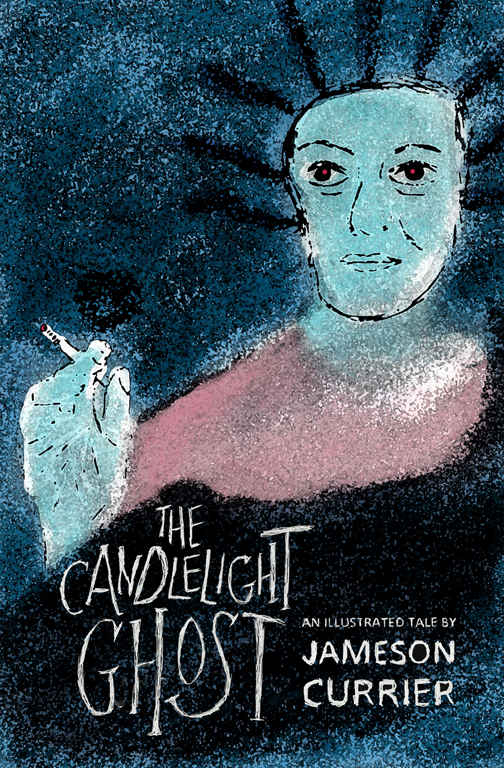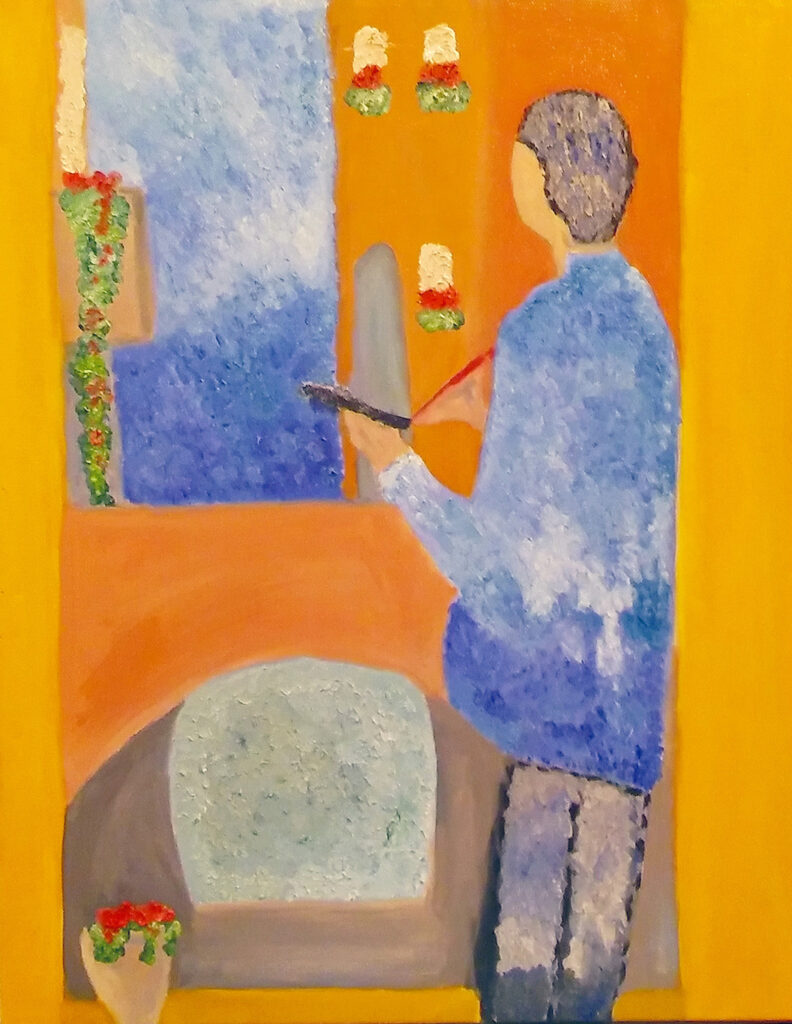
Serenissima
art by Jameson Currier
oil on canvas
20170525001
ADVENTURES IN OIL
story and art by Jameson Currier
May 25, 2017. It’s been an exhausting week of lessons, experimentation, and challenges.
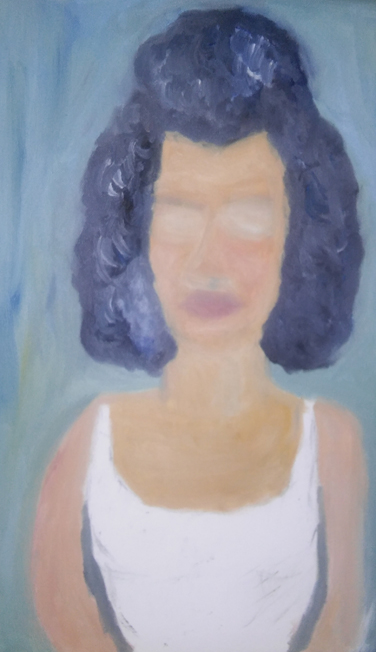
My adventures in oil painting began Monday morning. Day one was learning dry technique, using only the paint and a brush on a dry canvas. We had the same live model for each day of the class, but the object of day one was to draw a charcoal sketch onto the canvas and then use the dry technique. While I successfully got the entire canvas full of paint and form, I will easily admit that there was not any “art” behind it. I was also successfully disorganized, with paint tubes rolling around, brushes falling to the floor, paint spills on my shirt and pants, and grateful that I could afford the school expense of renting a locker (and purchasing a lock) to keep my supplies in the workshop until the end of the week. When I made it to my desk at my day job after the end of the class I was a sweating mess and had to change into my emergency dry T-shirt I have hidden in a drawer (next to the emergency wine bottle).

Day two was learning wet technique, using a thinner on the oil paint and doing a new painting of the same live model. I had found the empty Christmas tin box that my sister had given me filled with cookies and put all the oil tubes into it and used rubber bands to keep the brushes from fleeing the stool where I placed them. The wet technique was also a successful one. The result was the painting I’ve now dubbed “Fairy Godmother One.”
Day three was learning to paint with a palette knife, which I would describe as a cheese knife with an edge that will cut through nothing. The instructor demonstrated several impressive ways to paint with a palette knife, though none of them seemed to be as impressive as when I tried to replicate them. However, I did end up with a second completed painting, which is “Fairy Godmother One Too.” It is painted on top of the dry shapes and forms I did on day one. I realized when this painting was completed that it had captured both my limitations and my style. I have a fondness for American folk art (and have collected a few inexpensive pieces) so I hope that my primitive example will one day be embraced into the self-taught canon because no one taught me how to make the swirls in that hair. I did them all by myself.
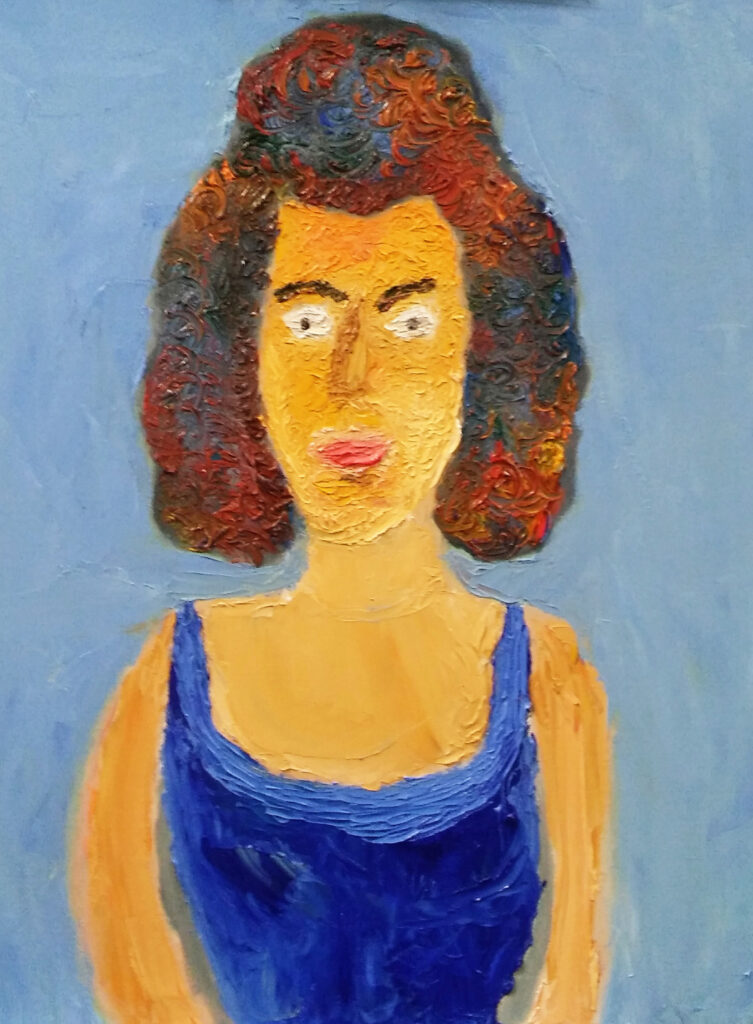
In a hallway of this art school in midtown Manhattan there were drawings made by school kids. Some of them were extraordinary pieces of art, much better than the hair swirls of the fairy godmother. I don’t remember any arts and crafts projects from my school years taught by instructors in the county school system. I am from the era of Home Ec for Girls and Shop for Boys. Anything artsy-craftsy I learned was by experimentation at home: particularly projects with Play-do, paper maché, and a year when I painted silhouettes on any flat surface I could find (including my bedroom walls).
Day four we were allowed to experiment however we wanted. We could draw a still life that was set up or draw the live model, or draw anything that inspired us. That morning before leaving my apartment, I had hurriedly looked through a book of paintings by the Bloomsbury artists, wanting to ask the instructor how to replicate the techniques Duncan Grant, Vanessa Bell, or Roger Fry had used on their still life portraits. But when I was in front of the blank canvas, I thought I would try painting a garden that was outside a door or window, even though it would be difficult to complete within the hours of the class. As I was blocking off a doorway and the back curve of a couch in the room in front of the garden, a memory of a bridge in the Dorsoduro floated into view. I’ve spent a lot of time in Venice, most of it from an unexpected surgery and recuperation while I was on vacation one year. I don’t hesitate saying that the doctor who decided to perform the surgery saved my life (it was a burst appendix with severe peritonitis) and I also don’t hesitate saying that the Italian social health care system kept me from going bankrupt, which I would have likely had to do if the surgery had happened in a New York hospital. So the desire to paint an English cottage and garden suddenly inspired a return of Venice, if only through memory and paint. This painting became a personal favorite before I even finished the sketch. Before the end of the class a fellow student admitted that she would buy it if it were for sale. It’s titled “Serenissima.”

Day five I spent working on adding more details to the Venice painting. I had gone to the art store the night before (after work), looking for a wet canvas carrier (which they didn’t have), and instead found some green and pink oils that I could use for the painting.
On the final day, however, the biggest challenge was how to get the wet canvases home. The school store had mysteriously uncovered some hidden wet canvas carrier clips, but as I tried to get the paintings into the clips, they scraped the sides of the canvas. But I lugged them through the turnstiles and onto the subway cars, ending up another sweating mess by the time I reached my apartment.
It’s safe to say that these three paintings are not only priceless to me, but also pricey, when you add up the costs of the class tuition, supplies, and assorted expenses. And if I could do it over again, I’d do it without trying to show up to a thankless day job after three and half hours of class and then working full-time hours, only to wake up exhausted the next day and do it again.
So lessons learned:
- Use a disposable palette. There is always something you have to clean up after when using oils, so tossing the used palette makes sense to me now.
- While all my clothes are old and shapeless, I really should distinguish some old, shapeless “painting clothes.”
- Unlike watercolor, where I have control over the paper, I don’t have control over a canvas, particularly finding a way to balance my hand to create thin, fine lines and details. My hand gets close to the canvas and then decides to bend with the bristles of the brush, creating smudges. So I compensate this lack of detail by looking for a more stylized approach to the drawing.
- Style is detail.
And a final takeaway: My apartment is now as crowded with art supplies as it is with books.
